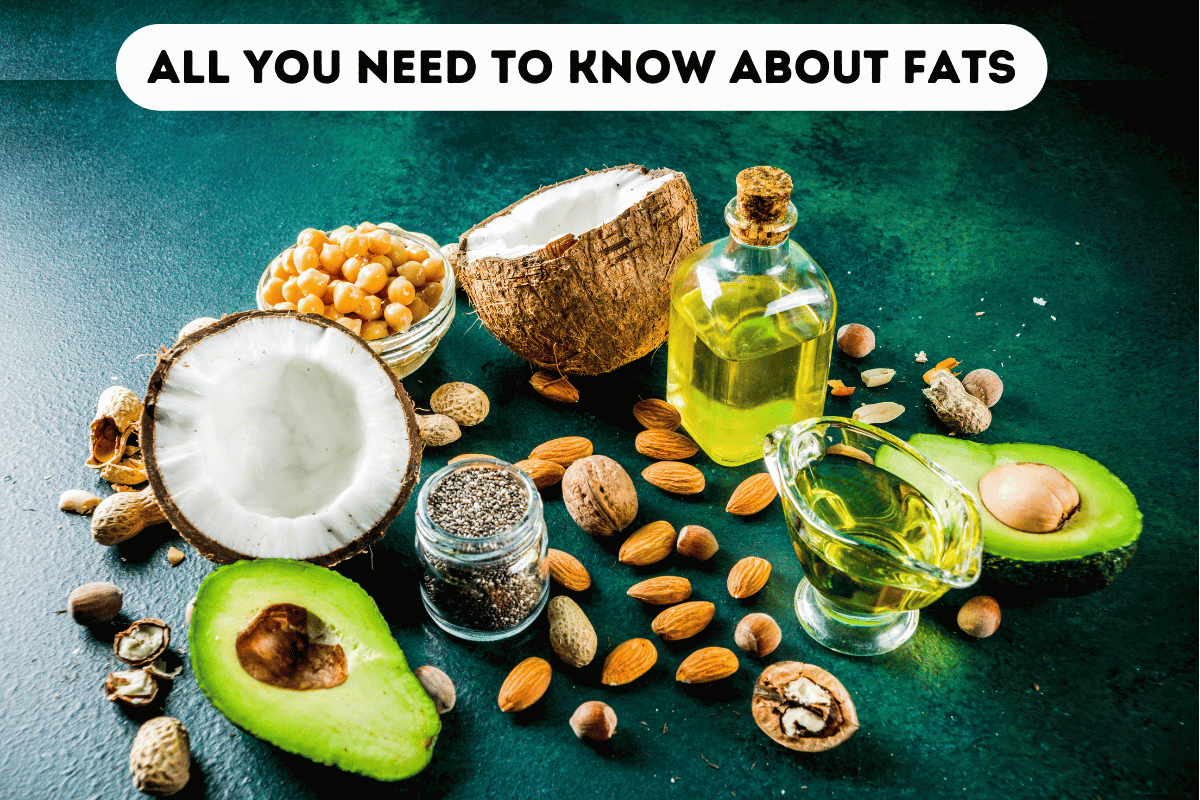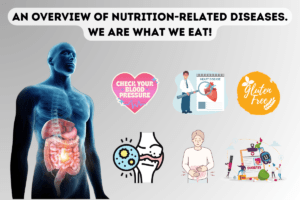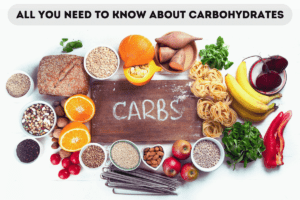Fat is usually seen as ‘the bad guy’ when discussing diet and food intake, but it’s important to remember that fat is an essential part of our diet. Fat is necessary for our bodies to function correctly. For example, fat provides more energy than either protein or carbohydrate, releasing 9 kcal/g, whereas carbohydrates and protein release just 4 kcal/g. Fat is stored in the body in the form of adipose tissue and can be used as energy when there is no other energy source. Fat provides insulation and helps prevent us from losing body heat. Some vitamins that our body requires, like vitamins A, D, E and K, can only be transported by fat. Without these vitamins, we could get problems with bone growth, eyesight, nail formation, blood clotting, kidney function, repair and reproductive functions. Fat is a significant constituent of our cell membranes and the walls of the body cells that we couldn’t live without. And fat in our skin prevents water loss by evaporation and keeps the skin plump and hydrated. Now let’s speak in detail about what is fat.
Different types of fat.
Fats are organic compounds that are made up of carbon, hydrogen, and oxygen atoms. They belong to a group of substances called lipids. There are three main types of fat: saturated fat (solid at room temperature), unsaturated fat (liquid at room temperature) and trans-fat (Picture below).
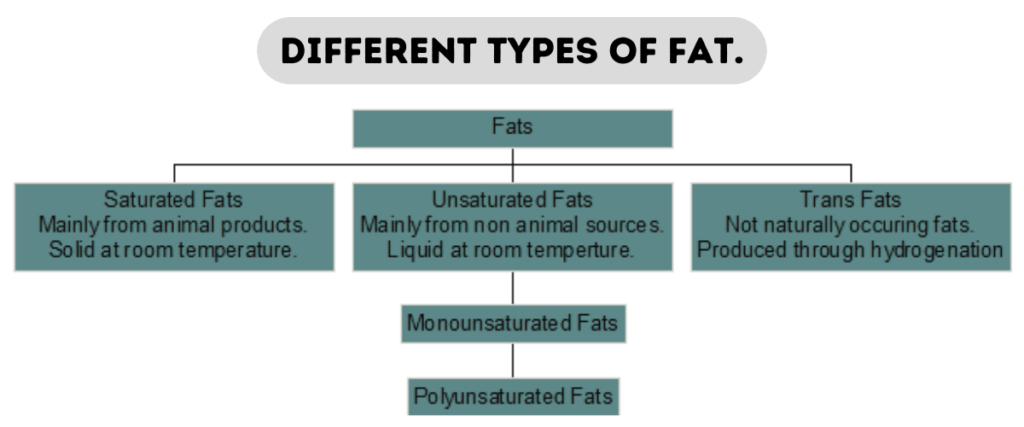
Saturated fats are found mainly in animal fats, including beef, lamb, pork, and veal, as well as dairy products such as whole milk products, butter, hard margarine and some soft margarine, most cheeses, and a few plant products such as cocoa butter, coconut oil, and palm oil. As to unsaturated fat, there are two types: monounsaturated fatty acids and polyunsaturated fatty acids. Monounsaturated fats are normally found in olive oils, peanut oil, avocado, and nuts such as peanuts, hazelnuts, cashews and almonds. Polyunsaturated fat sources include fish, seafood, polyunsaturated margarine, vegetable oils such as safflower, sunflower, corn or soy oils, nuts such as walnuts and Brazil nuts, and seeds.
Trans fat is an artificially created fat produced from polyunsaturated fats through hydrogenation – the addition of hydrogen atoms. They are often found in commercially baked products, fried foods, and ready meals. The production of trans fat (processed fat) resulted from the food industry wanting to convert liquid oils into solid fats, which are more useful in food manufacturing. A liquid polyunsaturated fat can be turned into a solid saturated fat or hydrogenated fat through hydrogenation. It’s better to avoid trans-fat because it’s damaging our health.
Also, it is crucial to mention essential fatty acids. Most of the fatty acids that your body requires can be produced in the body. However, two of them, known as ‘essential fatty acids’, cannot be made in the body. These ‘essential fatty acids’ are called omega-3 and omega-6. These fatty acids are vital for cardiovascular, reproductive, immune, and nervous systems. They are essential for manufacturing and repairing their cell membranes, enabling them to obtain optimum nutrition. That’s why it’s so important to get them with food. Sources of omega-3 fatty acids would be oily fish, flax seeds, pumpkin seeds, walnuts, soybeans, and dark green vegetables. Omega-6 fatty acids include polyunsaturated margarine and vegetable oil.
The current UK Government guidelines recommend that the average fat level in people’s diet should be about a third, or approximately 33%, and no higher than 35% of total energy intake. The average level of saturated fat should be no higher than 11%, monounsaturated fat 11%, polyunsaturated fat 6,5% and trans fat not more than 2%.
Fat and weight management
It can seem logical that eating fat would cause fat to accumulate in the body, but in reality, the process is more complex. There is such fat storage hormone like insulin. This insulin is released in response to rising blood sugar levels, which results mainly from carbohydrate consumption, not fat consumption. So this means we can gain weight from eating too many carbohydrates. And by the way, excess amounts of protein also can go to fat storage. In conclusion, we gain fat not by eating food that has fat but by consuming too many kilocalories. The secret of losing weight is calorie deficit. I wrote about this in my article “The Secret of All Diets”. To lose weight, you just need to eat fewer calories than you consume. So, do we need a low-fat diet to lose weight?

We already decided that fat is not our enemy, and about 35% of our diet can consist of fat. But we mustn’t forget that fat also contains 9 kcal per gram. It is over twice as energy-dense as carbohydrate or protein. So, reducing our fat intake can help create a calorie deficit, which is essential for weight loss. However, this decision also has some drawbacks. A low-fat diet has a low satiety level, so you will often feel hungry. You may also increase your sugar intake, as many low-fat foods are high in sugar. So, what do we have to do?
And the answer is very simple. We need to understand that excess calories, irrespective of where they come from, will lead to an increase in body fat. The carbohydrates and protein we eat can be converted to fat in our body, so it is possible to gain body fat even on a low-fat diet. To lose weight, we just need to follow the rules of a Balanced Diet and understand what Calorie Deficit is. You should not avoid high-fat foods such as avocados, nuts, and seeds, as these are valuable sources of healthy fats and nutrients. Focus more on a balanced diet rather than focusing on avoiding fat.
How fat is transported around the body?
So, after fat is broken down during digestion to fatty acids and glycerol, all these compounds need to be transported to where they are required for the body. For these to happen, the body has developed protein-based carriers called lipoproteins that completely encase lipids for transportation in the blood. The main lipoproteins are:
- Very low-density lipoproteins (VLDL). VLDLs are synthesised by the liver and contain cholesterol and triglycerides. They transport triglycerides to adipose tissue.
- Low-density lipoproteins (LDL). The LDLs are relatively low in triglycerides but high in cholesterol. LDLs are mainly involved in transporting the cholesterol manufactured in the liver to the tissues where it is used. High levels of LDL in the blood are associated with coronary heart disease, which is why it is often termed as ‘bad cholesterol’.
- High-density lipoproteins (HDL). HDLs are often known as ‘good’ cholesterols as they go around and clean up after the LDLs and have a relatively low triglyceride and cholesterol content. When HDLs leave the liver, they have very low cholesterol levels, but as they travel around the body, they collect spare cholesterol (including from the artery wall) and return it to the liver for excretion or re-utilisation.
What is cholesterol?
Despite receiving a lot of bad press, cholesterol plays an essential role in how every cell in the body works. Cholesterol is a waxy substance produced mostly in the liver. It is essential for the structure of cell membranes, the manufacture of vitamin D and certain hormones, and the production of bile acids, which are needed for the digestion of fat in the gut.
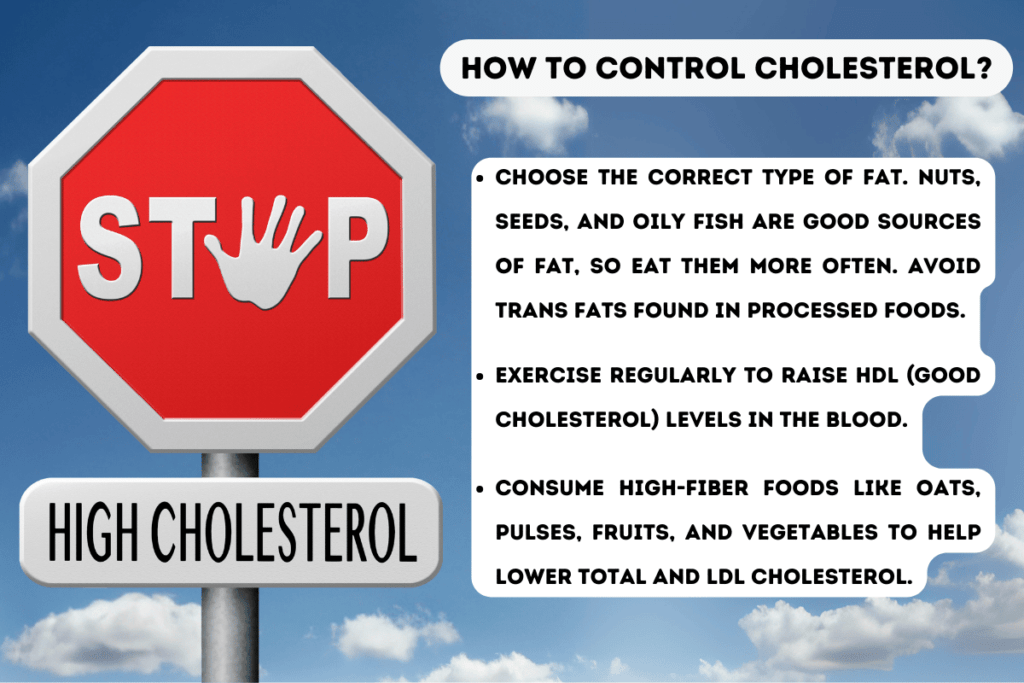
However, cholesterol can also increase your risk of heart problems if the level is not controlled. High LDL cholesterol and low HDL cholesterol levels can contribute to hardening of the arteries. Cholesterol accumulates on the walls of arteries, limiting the flow of blood to the heart and can lead to coronary heart disease. Three main factors can positively affect the HDL (good cholesterol) to LDL (bad cholesterol) ratio in the blood:
- Type of fat intake. Foods like nuts, seeds, and oily fish are good sources of polyunsaturated omega-3 fats, so you should eat them more often. Trans fats found in processed foods should be avoided altogether.
- Exercise tends to raise HDL (good cholesterol) levels in the blood. For example, an athlete may have a high total cholesterol level, but their HDL percentage will likely be higher as well.
- Fibre intake. Another way you can control circulating cholesterol levels is by having a high fibre intake. Foods high in fibre, especially those high in soluble fibre, help to lower total and LDL cholesterol. Soluble fibre is found in oats, pulses, fruit, and vegetables.
The cholesterol control and fibre.
As we already know, bile (which helps to digest fat) is created in the liver and cholesterol is used in its creation. Bile is released when food reaches the small intestine when you consume a meal containing fat. Fibre, which is resistant to digestion, moves through the digestion tract and absorbs water and other products, including bile. All this substance then moves through the digestive system and is eventually excreted. So fibre helps to get rid of some bile.
As part of the transport cycle, HDL must bring cholesterol back to the liver. And because the bile has also been removed, the cholesterol contained within the bile is not returned to the liver. The liver will recognise the absence of the bile and compensate for this loss by removing some of the circulating cholesterol from the bloodstream to manufacture more bile. This is how resistant to digestion, soluble fibre helps to reduce the amount of LDL cholesterol circulating in the blood. On the other hand, you should remember that overeating fibre could reduce the absorption of vitamins, minerals, and other vital nutrients. Because these nutrients also are absorbed by the fibre. So, fibre should always be consumed as part of a natural product and not just added to food. The habit of sprinkling bran onto cereals is not recommended. Natural products contain other nutrients that compensate for those lost by the action of fibre moving through the system.
Conclusion.
Now, let’s repeat the main things one more time:
1) Fat is essential for our bodies to function properly. For example, fat provides more energy than either protein or carbohydrate, releasing 9 kcal/g, whereas carbohydrates and protein release just 4 kcal/g. Fat is stored in the body in the form of adipose tissue and can be used as energy when there is no other energy source. Fat provides insulation and helps prevent us from losing body heat. Some vitamins that our body requires, like vitamins A, D, E, and K, can only be transported in fat.
2) Fats are organic compounds made up of carbon, hydrogen, and oxygen atoms. They belong to a group of substances called lipids. There are three main types of fat: saturated fat (solid at room temperature), unsaturated fat (liquid at room temperature), and trans fat.
3) Omega-3 and omega-6 are essential fatty acids. The body can’t produce them, so we should get them with the diet. These fatty acids are vital for our cardiovascular, reproductive, immune and nervous systems. That’s why it’s so important to get them with food.
4) The current UK Government guidelines recommend that the average fat level in people’s diet should be about a third, or approximately 33%, and no higher than 35% of their total energy intake. The average level of saturated fat should be no higher than 11%, monounsaturated fat 11%, polyunsaturated fat 6,5%, and trans fat not more than 2%.
5) To start losing weight, you don’t need to eat low-fat diets. You need to burn more calories than you are consuming.
6) Fatty acids and cholesterol are transported to where they are needed in the body by protein-based carriers called lipoproteins, which completely encase lipids for transportation in the blood. The key lipoproteins are VLDL, LDL (bad cholesterol), and HDL (good cholesterol).
7) Cholesterol is a waxy substance produced mainly in the liver and is essential for the structure of cell membranes and in the manufacture of vitamin D and certain hormones. But cholesterol can also increase your risk of heart problems if levels are not controlled.
8) Three main factors can positively affect the ratio of HDL ‘good’ cholesterol to LDL in the blood: the type of fat intake, exercise, and fibre intake.

